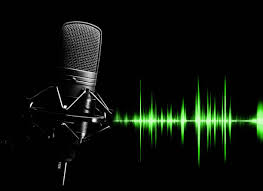Search Topic
The Ultimate Guide To Rhapsody

Rhapsodies are not only improvised but also pieces of music that are irregular in form. “Rhapsody in Blue,” composed by George Gershwin in 1924, is the best-known rhapsody in this category.
What is Rhapsody?
In music, a rhapsody is a relatively large and important composition for orchestra or solo instruments. The term “rhapsody” comes from the ancient Greek word “rhapsodia” which means “to speak in an improvised manner”.
Rhapsodies are longer-length compositions than symphonies in western classical music. Sonatas are the first movements of symphonies. They are usually composed of 3 movements although some can have 4. A 100-piece orchestra usually plays sonatas. Rhapsody” appeared in 1810, and the genre rose to popularity in the nineteenth century.
Types of Rhapsody in music
Rhapsody is the term given to a musical composition that is typically of a celebratory, joyous, or triumphal nature.
There are three types of Rhapsodies:
Symphonic Rhapsody:
A piece for orchestra and choir.
The piece is a composition for orchestra, choir, and soloists. It was written by the Russian composer Peter Ilyich Tchaikovsky in 1891.
The work is scored for an orchestra of piccolo, 2 flutes, 2 oboes, cor anglais (English horn), 2 clarinets in B-flat and A (clarinet doubling bass clarinet), 3 bassoons (3rd doubling contrabassoon), 4 horns in F, 3 trumpets in C and E-flat (trumpet doubling piccolo trumpet), 3 trombones, tuba, timpani and strings.
Symphonic Rhapsody is a piece that has been around for many years. It has been performed all over the world and continues to be performed today
Concertante Rhapsody:
A piece for solo instrument and orchestra.
Concerto Rhapsody is one of the best-known and most often heard compositions in classical music. It was composed by Wolfgang Amadeus Mozart in 1791.
This composition is a piece for solo piano and orchestra. The solo piano part was written by Mozart himself, while the orchestration was done by Franz Xaver Süssmayr.
The first movement of this concerto is in sonata form, with a slow introduction that leads to the Allegro assai vivace finale.
The second movement is a set of variations on an original theme, while the third movement has a more relaxed feel and features an extended cadenza towards its end.
Choral Rhapsody:
The Choral Rhapsody is an example of how the human voice can be used to imitate a symphony. This piece was written by the Russian composer Igor Stravinsky in 1908. It is considered to be one of his most important compositions and it features a choral section that has four vocal parts in it. The four parts are divided into two choirs, which are then situated on either side of the orchestra.
The choral section of this composition is what sets it apart from other symphonies, as this part was written specifically for vocalists and not for instruments alone. This is what makes it so unique and different from other pieces that were composed at the time.
Example of Rhapsody
Queen – Bohemian Rhapsody
Liszt’s Hungarian Rhapsody No. 2:
August’s Rhapsody’ from the movie August Rush








